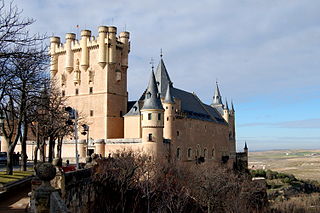| Škrljevo | |
|---|---|
| Coordinates: 45°58′41.17″N15°4′41.53″E / 45.9781028°N 15.0782028°E Coordinates: 45°58′41.17″N15°4′41.53″E / 45.9781028°N 15.0782028°E | |
| Country | |
| Traditional region | Lower Carniola |
| Statistical region | Southeast Slovenia |
| Municipality | Šentrupert |
| Area | |
| • Total | 1.14 km2 (0.44 sq mi) |
| Elevation | 275.1 m (902.6 ft) |
| Population (2002) | |
| • Total | 82 |
| [1] | |
Škrljevo (pronounced [ʃkəɾˈljeːʋɔ] ) is a settlement just west of Šentrupert in southeastern Slovenia. The area is part of the historical region of Lower Carniola and is now included in the Southeast Slovenia Statistical Region. [2] It includes the hamlet of Češnjice (German : Kerschdorf). [3] [4]

Šentrupert is a village in the traditional Lower Carniola region in southeastern Slovenia. In the past it was the cultural and economical centre of the Mirna Valley, but after the railway line bypassed the town the centre shifted to nearby Mirna. It is the seat of the Municipality of Šentrupert.

Slovenia, officially the Republic of Slovenia, is a sovereign state located in southern Central Europe at a crossroads of important European cultural and trade routes. It is bordered by Italy to the west, Austria to the north, Hungary to the northeast, Croatia to the southeast, and the Adriatic Sea to the southwest. It covers 20,273 square kilometers (7,827 sq mi) and has a population of 2.07 million. One of the successor states of the former Yugoslavia, Slovenia is a parliamentary republic and a member of the United Nations, of the European Union, and of NATO. The capital and largest city is Ljubljana.

Lower Carniola is a traditional region in Slovenia, the southeastern part of the historical Carniola region.
Škrljevo Castle (German : Grailach) [3] is a castle on the western edge of the settlement. It was first mentioned in written documents dating to 1044. The current building dates to the 15th and 17th centuries with some 19th-century rebuilding. [5]

German is a West Germanic language that is mainly spoken in Central Europe. It is the most widely spoken and official or co-official language in Germany, Austria, Switzerland, South Tyrol (Italy), the German-speaking Community of Belgium, and Liechtenstein. It is also one of the three official languages of Luxembourg and a co-official language in the Opole Voivodeship in Poland. The languages which are most similar to German are the other members of the West Germanic language branch: Afrikaans, Dutch, English, the Frisian languages, Low German/Low Saxon, Luxembourgish, and Yiddish. There are also strong similarities in vocabulary with Danish, Norwegian and Swedish, although those belong to the North Germanic group. German is the second most widely spoken Germanic language, after English.

A castle is a type of fortified structure built during the Middle Ages by predominantly the nobility or royalty and by military orders. Scholars debate the scope of the word castle, but usually consider it to be the private fortified residence of a lord or noble. This is distinct from a palace, which is not fortified; from a fortress, which was not always a residence for royalty or nobility; and from a fortified settlement, which was a public defence – though there are many similarities among these types of construction. Usage of the term has varied over time and has been applied to structures as diverse as hill forts and country houses. Over the approximately 900 years that castles were built, they took on a great many forms with many different features, although some, such as curtain walls and arrowslits, were commonplace.




